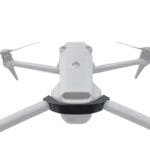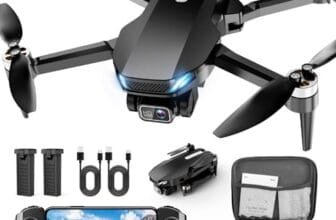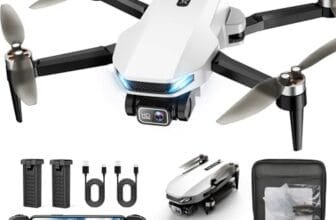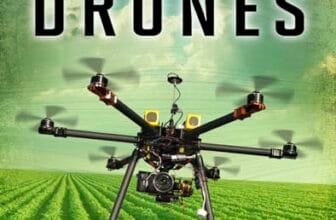
Drones have transformed emissions monitoring by providing efficiency and accuracy. They help track pollution and environmental changes effectively.
Emissions monitoring is crucial for understanding environmental health. Drones equipped with advanced sensors make this task easier and more precise. They can reach areas that are difficult for humans to access. This capability ensures that data collected is comprehensive and reliable.
Advances in spectroscopic monitoring have enhanced drones’ ability to analyze atmospheric conditions. Sensor technologies developed for civil infrastructures also play a vital role. These technologies help in identifying structural health and emissions. With drones, industries can monitor emissions regularly and maintain regulatory compliance. They are indispensable tools for improving environmental safety and awareness. As technology evolves, drones will continue to be essential in monitoring emissions effectively.
Advances In Spectroscopic Monitoring Of The Atmosphere

Advances in Spectroscopic Monitoring of the Atmosphere is an essential resource for scientists, researchers, and environmental analysts who are deeply involved in atmospheric studies and climate science. This comprehensive volume is tailored for individuals seeking to enhance their understanding of spectroscopic techniques and their application in environmental monitoring.
Pros:
- In-depth coverage of spectroscopic techniques for atmospheric monitoring.
- Authored by Elsevier, a trusted name in scientific publications.
- Comprehensive 632 pages offering detailed insights.
- First edition, providing the latest advancements in the field.
Cons:
- May be too technical for beginners in atmospheric studies.
- Relatively heavy due to extensive content, which may be cumbersome to carry.
This authoritative book offers advanced features that cater to the needs of professionals in atmospheric science. The spectroscopic techniques detailed within allow for precise monitoring of atmospheric components, aiding in better environmental analysis and climate modeling. This feature is particularly beneficial for researchers focusing on air quality and pollution assessment.
The book’s substantial content not only covers theoretical aspects but also provides practical insights into spectroscopic applications. With 632 pages of information, users can delve deeply into various methodologies and their implications for atmospheric research. The book’s dimensions and weight ensure it is packed with knowledge, making it a valuable addition to any scientific library.
To buy this product, click here.
Sensor Technologies For Civil Infrastructures: Volume 2: Applications In Structural Health Monitoring

The ideal customer for “Sensor Technologies for Civil Infrastructures: Volume 2” is professionals and researchers in the field of civil and structural engineering. This comprehensive volume is perfect for those who are deeply involved in structural health monitoring, providing an in-depth understanding of how sensor technologies can be applied to assess and maintain infrastructure integrity. If you are looking to enhance your knowledge or apply advanced sensor technologies in real-world scenarios, this book is a must-have resource.
Pros:
- Comprehensive Coverage of sensor technologies for civil infrastructures.
- Detailed Applications in structural health monitoring.
- Published by a reputable brand, Woodhead Publishing.
- Extensive content with 724 pages to explore.
Cons:
- Technical content may be overwhelming for beginners.
- Heavy and large book, potentially inconvenient to carry.
The book’s features include a comprehensive exploration of sensor technologies used in civil infrastructures, specifically focusing on their applications in structural health monitoring. With contributions from leading experts, this volume provides cutting-edge insights into the most effective methods for ensuring the safety and longevity of structures, making it an invaluable resource for those involved in engineering and maintenance. The detailed case studies and examples offer practical knowledge that can be applied directly to real-world projects.
Another standout feature is its emphasis on advanced methodologies. Readers will benefit from the book’s thorough examination of innovative techniques and tools designed to improve monitoring efficiency and accuracy. By understanding these technologies, professionals can enhance their ability to detect and address potential issues before they become critical, thus prolonging the lifespan of vital infrastructures and ensuring public safety. Additionally, the book serves as an excellent reference point for those seeking to implement state-of-the-art monitoring systems in their projects.
To buy this product, click here.
Frequently Asked Questions
What Are The Best Drones For Emissions Monitoring?
Drones equipped with advanced spectroscopic sensors are ideal for emissions monitoring. They provide accurate data collection from hard-to-reach areas. These drones offer real-time analysis, helping to track and reduce harmful emissions effectively. Investing in high-quality drones ensures reliable and efficient environmental monitoring.
How Do Drones Improve Emissions Monitoring?
Drones enhance emissions monitoring by providing aerial perspectives and collecting data efficiently. They access difficult terrains and high altitudes easily. Equipped with advanced sensors, they deliver accurate real-time data. This technology allows for quick identification and mitigation of emissions sources, supporting environmental protection efforts.
What Is Spectroscopic Monitoring In Drones?
Spectroscopic monitoring uses sensors to detect specific gases and particles in the atmosphere. Drones equipped with these sensors provide detailed emissions data. They analyze light absorption and emission patterns to identify pollutants. This method offers high accuracy in environmental monitoring, crucial for emissions control and analysis.
Why Use Drones For Atmospheric Monitoring?
Drones offer flexibility and efficiency in atmospheric monitoring. They access remote areas and provide real-time data collection. Their advanced sensors detect pollutants accurately, aiding in emissions reduction efforts. Using drones minimizes human intervention, making the monitoring process safer and more effective.
What Sensors Are Used In Emissions Monitoring Drones?
Emissions monitoring drones use various sensors, including spectroscopic and gas detection sensors. These sensors identify and measure pollutants in the atmosphere. They provide accurate data on emissions levels, enabling effective environmental monitoring. Advanced sensor technology ensures reliable and precise detection of harmful emissions.
Conclusion
Drones play a crucial role in emissions monitoring. They offer flexibility and precision in tracking pollutants. Advances in spectroscopic monitoring improve atmospheric analysis. These technologies help detect harmful gases more accurately. Sensor technologies are vital for infrastructure health. Volume 2 of the series focuses on their applications in structural health monitoring.
These resources enhance our understanding of environmental challenges. Choosing the right drone can make emissions monitoring more efficient. Consider factors like range, sensor type, and ease of use. This ensures accurate data collection. Drones equipped with advanced sensors are valuable tools for environmental research.
They contribute to cleaner air and safer environments. Investing in the right drone technology is essential. It supports sustainable practices and helps manage pollution effectively. Stay informed about the latest advancements. This knowledge supports better decision-making in emissions monitoring. Embrace technology to protect our planet and ensure healthier communities.











